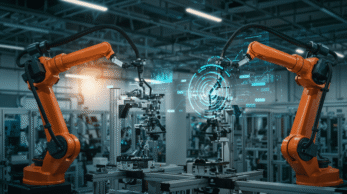If industrial maintenance is often seen as an unavoidable expense, its stakes go far beyond the simple cost of interventions. Behind approximate management lie numerous impacts: unplanned downtime, energy waste, production losses, and even regulatory non-compliance.
In this article, we highlight the invisible costs of poorly optimized maintenance and the levers to activate for sustainably improving industrial performance. Because with a good strategy and the right tools, it is possible to turn maintenance into a competitive advantage.
Hidden Costs: When Maintenance Becomes an Invisible Trap.
Poorly managed, maintenance can cost much more than one might think. Some indirect expenses, often overlooked, heavily burden margins and weaken the organization.
Unplanned Production Downtime
A production stop, even short, can disrupt the entire logistics chain. A single hour of downtime can cost between 10,000 and 250,000 euros, depending on the industry sector (According to the Society for Maintenance & Reliability Professionals).
Without good visibility on the state of assets, the risks of unexpected interruption increase. Conversely, planned maintenance allows focusing interventions on the least critical periods.
Energy Overconsumption
A poorly maintained motor or a simple leak can cause the energy bill to skyrocket. The International Energy Agency estimates that about 20% of energy consumption in the industry could be avoided through better technical monitoring of machines.
By continuously monitoring weak signals (vibrations, temperature, consumption), it is possible to identify anomalies before they turn into major losses.
The Cost of Emergency Interventions
When a breakdown occurs without warning, additional costs accumulate:
- Emergency orders for spare parts, often 3 to 5 times more expensive
- Overtime for technical teams
- Immediate travel of service providers, increased due to urgency
Good anticipation avoids these crisis scenarios.
Loss of Quality and Non-Compliance
A defective asset can produce non-compliant parts, resulting in waste, customer returns, or even product recalls. A study by Deloitte shows that these defects can represent up to 5% of the annual turnover of an industrial site.
In regulated sectors, such as pharmaceuticals or aerospace, traceability of interventions is mandatory. In case of non-compliant audit, financial penalties can be severe.
False Budgetary Choices: Saving Short-Term to Lose Long-Term
Some decisions, made with a cost reduction logic, can backfire on the company. Here are three common examples.
Spacing Out Maintenance Operations
Delaying preventive maintenance may seem logical to save money. However, this increases the risk of major breakdowns.
According to the McKinsey Global Institute, companies that invest in structured maintenance reduce their repair costs by 25 to 30% over 5 years. Conversely, those that extend deadlines see their expenses increase by 15% per year.
Reducing Spare Parts Inventory
Reducing inventory may seem profitable. But a shortage of a critical part can lead to several days of downtime. In the railway sector, this leads to up to 50% more unavailability.
Smart inventory management, based on history and usage forecasts, allows optimization without risking complete shutdown.
Outsourcing Without Control
Outsourcing maintenance can be beneficial… provided that services are well-defined. Without monitoring, costs explode.
A study by PwC reveals that companies that do not control their providers pay on average 20% more than those that monitor and frame their contracts.
Regaining Control Through Optimized Maintenance
To sustainably reduce maintenance costs, it is not enough to act in urgency: processes must be structured and technical data capitalized on.
Levers to Activate to Reduce Your Maintenance Costs
- Continuous asset monitoring: detect signs of weakness before failure
- Intervention planning: target the least critical periods
- Smart inventory: avoid shortages without immobilizing too much capital
- Traceability and compliance: anticipate audits and secure production
CMMS, a Concrete Response to Maintenance Challenges
Maintenance costs are not limited to repair bills: they infiltrate everywhere — in energy, quality, downtime, logistics.
Faced with these challenges, CMMS (Computerized Maintenance Management System) is much more than a tracking tool: it’s a strategic lever.
It allows:
- centralizing asset information
- recording intervention history
- planning effectively
- anticipating spare parts needs
- ensuring regulatory compliance
By structuring processes, CMMS reduces unforeseen events, improves productivity, and controls the budget. It turns maintenance into a true pillar of industrial performance.
Dextra Testimonial:
“Implementing DimoMaint CMMS allowed us to structure our preventive maintenance, significantly reduce unexpected corrective interventions, and visualize our performance indicators in real-time. OEE has significantly improved.”
👉 Read the full testimonial





